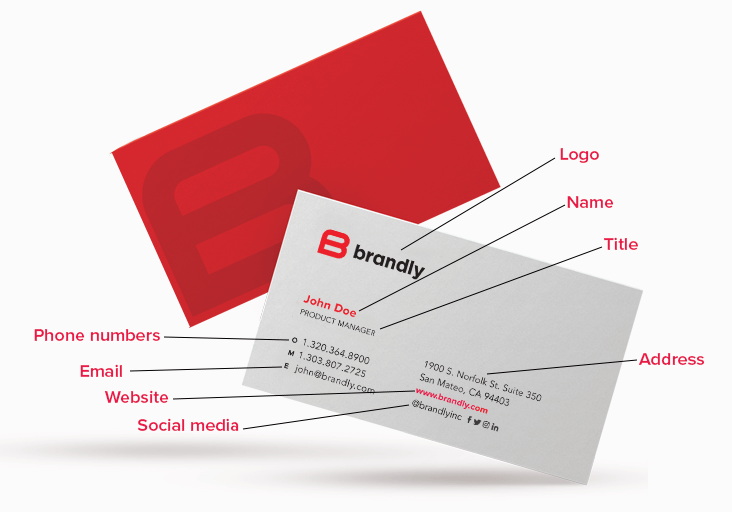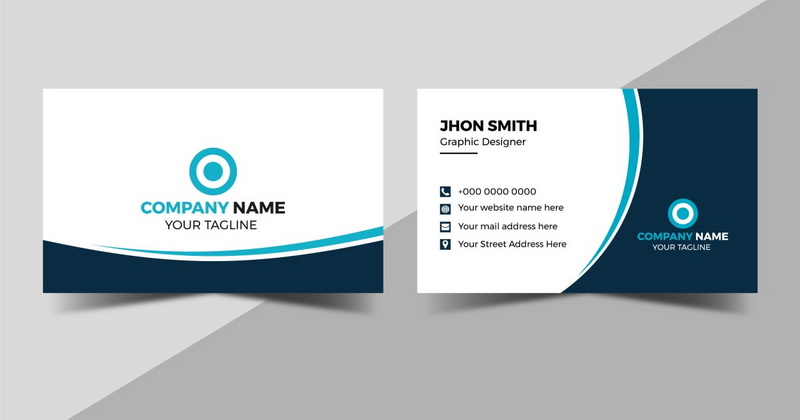Content Menu
● Introduction
● Understanding the Purpose of a Business Card
● Key Elements of an Effective Business Card Design
>> Target Your Audience
>> Essential Information
>> Design Principles
>> Visual Elements
>> Technical Considerations
>> Size and Orientation
>> Unique Features
● Choosing an Online Business Card Maker
>> Steps to Create a Business Card Online with Design.com
● Tips for Using Online Business Card Makers
● The Importance of High-Quality Printing
● Common Mistakes to Avoid
● Conclusion
● Frequently Asked Questions
>> 1. What is the ideal size and orientation for a business card?
>> 2. How can I make my business card stand out?
>> 3. What are the most important elements to include on a business card?
>> 4. How do I choose the right colors for my business card?
>> 5. What should I do after designing my business card online?
● Citations:
Introduction
In today's fast-paced business world, a well-designed business card remains an essential tool for making a lasting first impression. A business card is more than just a piece of paper; it is a tangible representation of your brand, your professionalism, and your attention to detail. With the advent of online business card makers, creating a unique and effective business card has become more accessible than ever. This article explores the key elements of designing a business card online, offering tips and guidelines to help you create a card that stands out and effectively communicates your brand identity.

Understanding the Purpose of a Business Card
Before diving into the design process, it's crucial to understand the primary purposes of a business card. A business card serves several important functions:
- First Impression: It is often the first physical interaction a potential client or partner has with your brand[2].
- Brand Representation: It visually communicates your brand's identity through colors, fonts, and overall design[5].
- Contact Information: It provides essential contact details, making it easy for people to reach you[2].
- Networking Tool: It facilitates networking by providing a convenient way to exchange information[2].
- Marketing Tool: It can act as a mini-marketing tool, prompting recipients to visit your website or contact you[2].
Key Elements of an Effective Business Card Design
Target Your Audience
The first step in creating an effective business card is to understand your target audience and industry. Make sure your card is easily relatable to your profession or business. For example, if you're a carpenter, you may include a photo related to carpentry to showcase your area of expertise[2].
Essential Information
A business card should include the most important information that directs the recipient to learn more about your profession or company[2]. This typically includes:
- Your Name
- Company Name
- Job Title
- Contact Information (phone number, email address, contact address, and social media pages)[2]
Design Principles
- Readability: Choose simple, easy-to-read fonts like Times New Roman or Arial[2]. Ensure the text size is large enough to read easily, especially if you have a lot of information to display[2].
- Color Scheme: Your color scheme expresses your brand's personality[5]. Start with your brand colors to ensure consistency. If your brand lacks distinct colors, opt for a palette that conveys the mood of your business—use cool colors for a professional look or vibrant tones for a creative edge[5].
- Layout: Pick an accessible layout[2]. For example, since people in English-speaking areas tend to read left to right, think about how that might affect which information on your business card a recipient views first[2].
- Logo: Place the company logo on either the back of the card or on the front next to your contact details[2]. Keep the logo simple so it can complement your business card[2].
- White Space: Ensure a professional layout by leaving ample white space for readability[5].
Visual Elements
- Imagery: Carefully consider your imagery to create a memorable impression[5].
- 3D Effects: Consider using 3D effects on your business cards if you want to get creative[2]. A 3D card makes viewers think they're looking at text or designs raised from the card's surface[2].
- Tactile Elements: Create your business cards using different physical textures, such as an embossed font or die-cut edges[2].
- Call to Action: Add a call-to-action (CTA) to encourage recipients to call you or visit your website[2]. The CTA could simply be a request to get in touch or could offer something unique, like a discount code or contest entry[2].
- QR Code: Add a QR code to your business card that brings customers directly to the company web page or online store when they scan that code with their phones[2].
Technical Considerations
- Color Model: Use the CMYK color model: cyan, magenta, yellow, black[2].
- Resolution: Ensure 300 dpi for best image reproduction[2].
- Trim Distance: Keep the main copy at least 5 mm from the edge of the trim[2].
Size and Orientation
While most business cards use a horizontal orientation and are about the size of a credit card, some professionals might prefer to choose a different size or orientation[2]. For example, you might have a design on the back of your card that looks better on a square or vertical business card[2].
Unique Features
- Functionality: Give the card a function that can make it useful to its recipients, such as seed packages, phone holders, or bottle openers[2].
- Visual Interest: Add sophistication to your card by using foil accents, a glossy coating, or another attractive feature[2].

Choosing an Online Business Card Maker
Several online platforms offer tools to create business cards quickly and easily. Here are a few popular options:
- Design.com: This platform allows you to enter a keyword to start creating the perfect business card, generating related business cards instantly[1]. You can fully customize the fonts, colors, and layout of your business card[1]. Design.com provides high-resolution files (PNG and JPG) for sharing and vector files (SVG, EPS, and PDF) for print[1].
- Adobe Express: With Adobe Express, you can create personalized business cards by mixing and matching fonts and color schemes and adding logos[4]. It offers various templates and allows you to make business cards for free[4].
- Canva: Canva's free business card creator makes it easy to brand your business card. You can upload your logo, use your brand colors, and choose complementary fonts[7].
- Vistaprint: Vistaprint offers a variety of templates and tools to help you design a business card that reflects your brand's personality[8].
Steps to Create a Business Card Online with Design.com
1. Search for a Business Card: Enter your business name to generate relevant business cards[1].
2. Refine Your Search: Enter related keywords to find the right business card[1].
3. Customize Your Business Card: Customize the colors, fonts, and layout of your business card using the editing tools. Add depth and a personal touch with shapes and gradient colors[1].
4. Download Your Business Card: Once you're done editing your business card, you can download it instantly. You'll get all the files you need to use your business card immediately[1].
Tips for Using Online Business Card Makers
- Start with a Template: Online business card makers offer a variety of templates to choose from. Starting with a template can save time and provide a solid foundation for your design[1].
- Customize Fonts and Colors: Use the customization options to align the fonts and colors with your brand identity[1].
- Upload Your Logo: Ensure your logo is prominently displayed on the business card for quick identification[7].
- Keep it Simple: Maintain a clean, uncluttered design to ensure readability[5].
- Proofread Carefully: Before finalizing your design, proofread all the information to ensure accuracy[2].
- Get Feedback: Before printing all your business cards, show them to a trusted colleague or friend and ask for their feedback[2].
The Importance of High-Quality Printing
Once you've designed your business card online, the next crucial step is to ensure high-quality printing. The printing quality can significantly impact the overall impression of your card.
- Paper Stock: Choose a paper stock that feels professional and durable. Options include matte, glossy, and textured finishes.
- Printing Quality: Ensure the printing is sharp and the colors are accurate. Avoid printing services that produce blurry or faded results.
- Finishing Touches: Consider adding special finishes like embossing, foil stamping, or spot UV coating to enhance the card's visual appeal.
Common Mistakes to Avoid
- Cluttered Design: Overcrowding your card with too much information can dilute its impact[5].
- Poor Readability: Using fonts that are too small or difficult to read can make your card ineffective[2].
- Inconsistent Branding: Failing to align the design with your overall brand identity can create confusion[5].
- Low-Quality Printing: Using cheap paper or a low-quality printing service can undermine the card's professionalism.
- Lack of a Call to Action: Omitting a call to action can miss an opportunity to engage potential clients[2].
Conclusion
Designing an effective business card online involves careful consideration of various elements, from the layout and color scheme to the quality of printing. By understanding the purpose of a business card, adhering to design principles, and leveraging online tools, you can create a card that leaves a lasting impression and effectively promotes your brand. Remember to keep the design simple, ensure readability, and align the card with your overall brand identity. With these guidelines, you can create a business card that not only provides essential contact information but also serves as a powerful marketing tool.

Frequently Asked Questions
1. What is the ideal size and orientation for a business card?
The standard size for a business card is 3.5 x 2 inches, which is about the size of a credit card[2]. The horizontal orientation is most common, but a vertical or square orientation can be used for a more unique design[2]. The best choice depends on your design and how it best showcases your information and brand[2].
2. How can I make my business card stand out?
To make your business card stand out, consider using unique materials, finishes, or shapes. Incorporate tactile elements like embossing or die-cut edges[2]. Add a QR code that directs recipients to your website or online portfolio[2]. A creative and memorable design will help your card make a lasting impression[2].
3. What are the most important elements to include on a business card?
The most important elements to include on a business card are your name, company name, job title, and contact information (phone number, email address, and website)[2]. Ensure that this information is prominently displayed and easy to read. A logo and a brief tagline can also be beneficial[2].
4. How do I choose the right colors for my business card?
Choose colors that align with your brand's personality. Use your brand colors to ensure consistency[5]. If your brand lacks distinct colors, opt for a palette that conveys the mood of your business. Cool colors often convey a professional look, while vibrant tones can give a creative edge[5]. Consider the psychological effects of different colors and how they might influence the perception of your brand[5].
5. What should I do after designing my business card online?
After designing your business card online, carefully proofread all the information to ensure accuracy. Get feedback from trusted colleagues or friends[2]. Choose a high-quality printing service and select a paper stock that feels professional. Consider adding special finishes like embossing or foil stamping to enhance the card's visual appeal[2].
Citations:
[1] https://www.design.com/business-card-maker
[2] https://www.indeed.com/career-advice/career-development/business-card-tips
[3] https://github.com/haoweiguang/haoweiguang.github.io/blob/master/index.html
[4] https://www.adobe.com/express/create/business-card
[5] https://www.swagify.com/blog/how-to-design-a-business-card/
[6] https://www.cnblogs.com/apachecn/p/18463806
[7] https://www.canva.com/create/business-cards/
[8] https://www.vistaprint.com/hub/business-card-design-rules
































